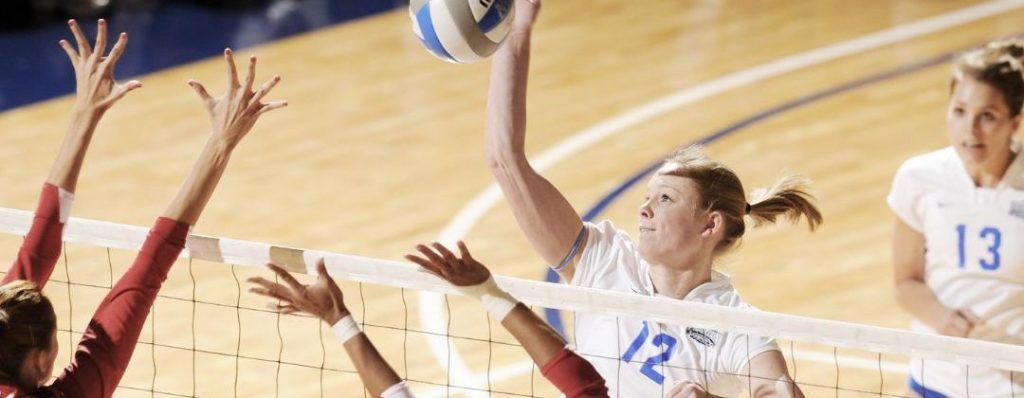Implementing prevention strategies is the key to keeping your athletes healthy, playing, and assisting the team with earning more wins. Since injury is often caused by poor biomechanics, neuromuscular deficiencies, overtraining, and decreased flexibility, effective preventative strategies include integrated flexibility, proprioceptive training, strengthening, a focus on proper technique, and progressive plyometric training.
Here are key strategies to implement to prevent common volleyball injuries:
Preventing ACL Injury
Research continues to show that female athletes are at a greater risk of ACL injury compared to males. Possible explanations for this increased risk in females include:
- A structurally weaker ligament that is more prone to injury
- Wider hips and a narrowing at the knee and ankle leading to development of less knee protection and higher relative loads on the ACL
- Landing mechanics characterized by greater extended posture (i.e., less hip and knee flexion), resulting in greater forces at shallow knee angles as well as greater knee valgus.
Along with teaching proper landing mechanics among female athletes to help reduce the stress on the ACL during sport activities, improving muscular strength and coordination among the muscles crossing the knee joint may prove valuable in reducing the risk of ACL injuries.
ACL injury can be prevented with these two programs:
- Proprioception-balance training and flexibility training through yoga classes designed specifically for athletes*
- Plyometric-agility training and technique-movement awareness training through HIIT style Jump Training**
*Yoga for athletes is not “athletic” or “powerful” yoga – it is a method of recovery used to balance out the physical demands, repetitive actions, and mental stress of the gym/court/field. Athletes in all stages of development benefit from the effects of yoga, using it to progress to the next level of performance goals, both physically and mentally. Benefits include: muscle recovery, increased flexibility and range of motion, and improved balance and body awareness.
**Jump Training is done in 4 phases to match the athletic season and is designed to achieve vertical goals at a faster, more specified pace.
Preventing Low Back Injury
Exercise is an important component to treating and preventing non-specific low back pain. Strengthening exercises targeting the lumbar spine, lower limbs, glutes, and abdominal muscles were successful to decrease pain and improve function.
Therefore,…
Click Here to Read the Full Original Article at Junior Volleyball Association…



